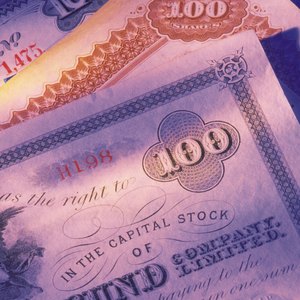
A company’s balance sheet provides excellent insight into its overall health. And it also enables you to understand some of the moves a company makes if the basic values drastically change from one reporting period to another. One way you can determine these moves is by watching out for the number of shares outstanding.
What Is Common Stock Outstanding?
Common stock outstanding refers to the sum of all shares that a company’s insiders and its investors own. And sometimes, it is known as shares outstanding.
If you are an investor, this figure will enable you to determine how a company has performed on a per-share basis compared to the competition within the industry. It is a much better analysis option, instead of depending on the share price, which is dynamic and subject to constant market fluctuations.
Also, common stock outstanding has direct implications on your ownership level. An increase in common stock outstanding reduces your stake in a company you invest in. In addition, more shares may mean less control for shareholders and a lower share price due to value dilution.
Difference Between Shares Issued and Outstanding
Issued shares are those given out in exchange for money to investors or as compensation for work or supplies one does or provides for the company to employees and suppliers. While people tend to confuse them with shares outstanding, they are not completely similar.
A company’s outstanding shares may be less than or equal to issued shares. That is because they do not consider the shares in reserve. However, issued shares include those that were initially allocated to investors and those in reserve. Also, outstanding shares do not include preferred shares but issued shares do.
However, to learn how to calculate outstanding shares, you must figure out the authorized and treasury stock, especially if you don’t have all the balance sheet information.
What Is Authorized Stock?
Authorized stock is the total number of stock or shares that a company is legally allowed to issue. And it is shown within a company’s Articles of Incorporation. It includes the shares owned by company management, shareholders and institutional investors such as hedge funds.
Think of authorized stock as the absolute maximum number of shares that can be available on the market for trading. And you can find the value within a company’s balance sheet’s capital accounts section.
What Is Treasury Stock?
It is worth noting, though, that companies may buy back some of the shares they issued. The repurchased or held-back shares then become treasury stock.
Generally, treasury stock does not count toward the number of shares outstanding. And these shares do not receive dividends nor do they get voting rights. Looking at several examples of stockholders’ equity on different company balance sheets, you may notice a treasury stock line item on several of them.
So:
Treasury stock = Issued shares - Outstanding shares
Companies may buy back their shares because they want to drive the share prices up or gain some control in case of a hostile takeover. In addition, they could purchase shares in preparation to delist and go private again. Also, companies may buy shares back to keep them in reserve for employee stock award plans.
Calculate the Common Stock Outstanding From a Balance Sheet
Below is the procedure for calculating common stock outstanding from a balance sheet.
- Find the balance sheet of the company you have invested in. You can do that via the company’s website in the investors’ section. Check out its Form 10-K. Also, you can search for the balance sheet information from sites like Wall Street Journal, MarketWatch, etc.
- Search for the stockholder’s equity or shareholder’s equity section. You will likely find it after the liabilities accounts within the balance sheet.
- Identify the issued shares within the stockholder’s equity section. Consider that value A.
- Identify the treasury stock within that same section. Consider that value B.
- Subtract the number of treasury stock from the issued shares to get the number of shares of common stock outstanding. So, A - B = common stock outstanding.
For example, if a company has issued 20 million shares and has treasury stocks of 7 million, its shares outstanding are 13 million.
It is worth noting that some companies may choose to list the number of common stock or shares outstanding. In that case, you do not need to calculate anything. And if there is no treasury stock, the number of issued shares will be equal to the number of common stock outstanding.
References
Tips
- If a company has no shares of treasury stock, the number of shares issued will equal its number of shares outstanding.
- Check the number of shares of common stock outstanding each quarter to see if your ownership percentage is changing.
Writer Bio
I hold a BS in Computer Science and have been a freelance writer since 2011. When I am not writing, I enjoy reading, watching cooking and lifestyle shows, and fantasizing about world travels.

